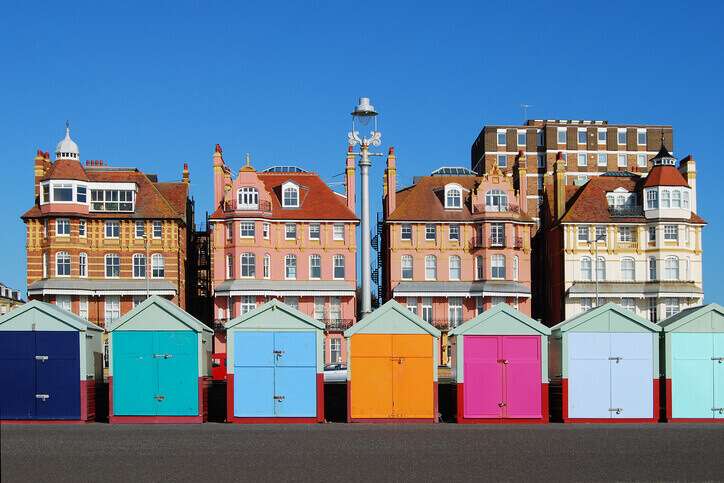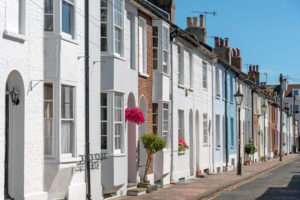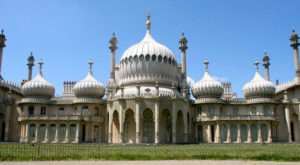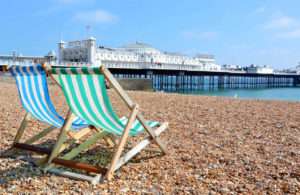
The splendour of Brighton’s sash windows
Brighton’s architectural splendour is renowned throughout the world. The grandeur of the seafront, the quirkiness of the Royal Pavilion, the soulful intimacy of The Lanes – Brighton’s architecture has style and character in abundance. Amid Brighton’s varied architectural riches, one feature stands out above all others: the windows. Brighton is a haven of sash windows.
From the tight-knit shops and dwellings of The Lanes, where weatherboarded buildings huddle together to protect one another from the coastal winds, to the open opulence of the Royal Crescent and the geometrical elegance of Brunswick Town, sash windows are evident in all sorts of styles.
Looking for sash window installation, refurbishment or replacement services in Brighton? Get in touch with The Specialist In Traditional Sash Windows today by filling out our quick enquiry form or phoning us on 0800 389 7384. We will be able to provide you with a free, no obligation quote.
Why sash windows are popular in Brighton
To understand why sash windows are so popular in Brighton, you only need to look out to sea. Sash windows have evolved with two main objectives: economy of space and maximum influx of light. With all that sea and sky to look at, the inhabitants of Brighton want their windows to be as big and uncluttered as possible.

Sash windows originated at the start of the Georgian era, soon after the Great Fire of London. Because of the proximity of the buildings, often leaning out across the street within touching distance of each other, casement windows were both impractical and a fire risk. A new type of window was invented using two horizontal sashes (from the French ‘chassis’), one of which could slide open. This gave ventilation without opening outwards.
Vertical sash windows were a later invention, initially using wedges to support the top sash against the force of gravity. By the time of the Regency period, vertical sash windows with lead weights on twine cords were vastly popular.
The varied inspirations behind Brighton’s architecture
The Regency period takes its name from George, the Prince Regent (later to become King George IV), under whose extravagant eye some of England’s finest architecture was commissioned. In Brighton, he commissioned the architect John Nash to build him a retreat where he could go to take the sea air and water (drinking sea water was thought to be good for the constitution at the time).

Brighton’s iconic Royal Pavilion
Nash came up with the Royal Pavilion, a remarkable piece of architecture, inspired by the temples of India with its onion domes and intricate latticework. On the ground floor are tall picture windows with large panes of glass. On the first floor are elegantly shaped sash windows, with ornate wood mouldings and again, large panes of glass.
The size of the panes tells its own story in the history of sash windows. Glass-making techniques pre-Industrial Revolution were created in thin, brittle panes that had to be kept small to avoid breaking. This meant more woodwork and thus less light coming in. Multi-paned sash windows are typical of the Regency period.
The evolution of sash window styles
The type of wood used for making sash windows changed over the course of the 19th century too. Hardwood, predominantly oak, was the norm in the Regency period but this gave way to pine in the Victorian age, and in some cases more lightweight softwoods, which didn’t have the longevity of oak or high-quality pine.
By the Victorian age, industrial processes had developed to produce thicker, stronger, clearer panes of glass. This meant sash windows could be made with less wood and fewer, larger panes, giving a more unobstructed view and cleaner lines. In parts of Brighton like Brunswick Town, originally designed as a new town by another renowned Regency architect, Charles Busby, affluent Victorian homeowners had their sash windows reconfigured, replacing the original multiple panes with large, single panes of glass. This influence can still be seen in many of Brighton’s sash windows.
The Edwardian period saw sash windows designed as a combination of the Regency style and Victorian style, with a multi-pane upper sash and a single-pane lower. There are some fine examples of this in residential roads around Preston Park.
Of course, with the advent of plastic materials, uPVC frames became popular, particularly with modern double-glazed windows. Plastic remains inferior to wood, though, particularly for the reasons of sustainability, quality and the inimitable character that traditional wooden sash windows offer.
Read our blog for more information: Traditional Wooden Windows versus uPVC Plastic Windows
Brighton needs its sash windows

With properties in Brighton currently selling for an average of £400,000, on a par with parts of Greater London, the appeal of living in Brighton is as strong as it was in Prince George’s day. Renovations to the Grand Hotel, a classic example of Brighton’s Victorian architecture, are evidence of a wider campaign of restoration in the city.
The fashion for sash windows died out in the 1930s due to a lack of skilled labour and a drive towards low-cost building techniques, but today those skills are being revived by popular demand and Brighton is benefiting. While other parts of the country have seen sash windows ripped out and replaced with soulless alternatives, Brighton has recognised the importance of its sash windows in the overall character and beauty of the place, as well as the security that high-quality traditional windows provide.
The value of properties in Brighton is now as dependent on the preservation of sash windows as it is on the architectural brilliance of Nash, Busby et al, the vibrancy of its nightlife and the constant presence of the sea.
Looking for sash window restoration or installation in Brighton?
Contact us today by emailing info@sashwindowspecialist.co.uk or call The Specialist in Traditional Sash Windows on 0800 389 7384.
For more information on our sash window installation and refurbishment expertise and services in Brighton, visit the sash window replacement and upgrade or Brighton pages.
Got a specific question? Our FAQ page might have the answers you need.





